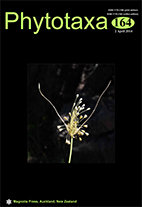Abstract
Indopiptadenia, a monospecific genus with the species I. oudhensis, is confined to the Indo-Nepal border area in scattered populations along the Himalayan foothills between 156–908 m elevation. I. oudhensis has been little studied since its discovery in 1874. The taxonomy of the genus is reexamined here with extensive notes on diversity, distribution, phenology, ecology and conservation status based on exhaustive field survey and examination of herbarium specimens. A full description including data on many new characters and encompassing all morphological variations is provided to better characterize the species so that its correct systematic position can be ascertained and provide the basis for proper conservation strategies. Placed in the tribe Mimoseae, the species shows more affinity towards the Newtonia group than the Piptadenia group. However, it differs from the former in having unarmed to armed stem, uni- or bijugate leaflets, absence of stemonozone and pods that dehisce generally by rupturing of the pod valves over the seed chambers to leave a persistent replum. The IUCN category Near Threatened (NT) is assigned to the taxon.

